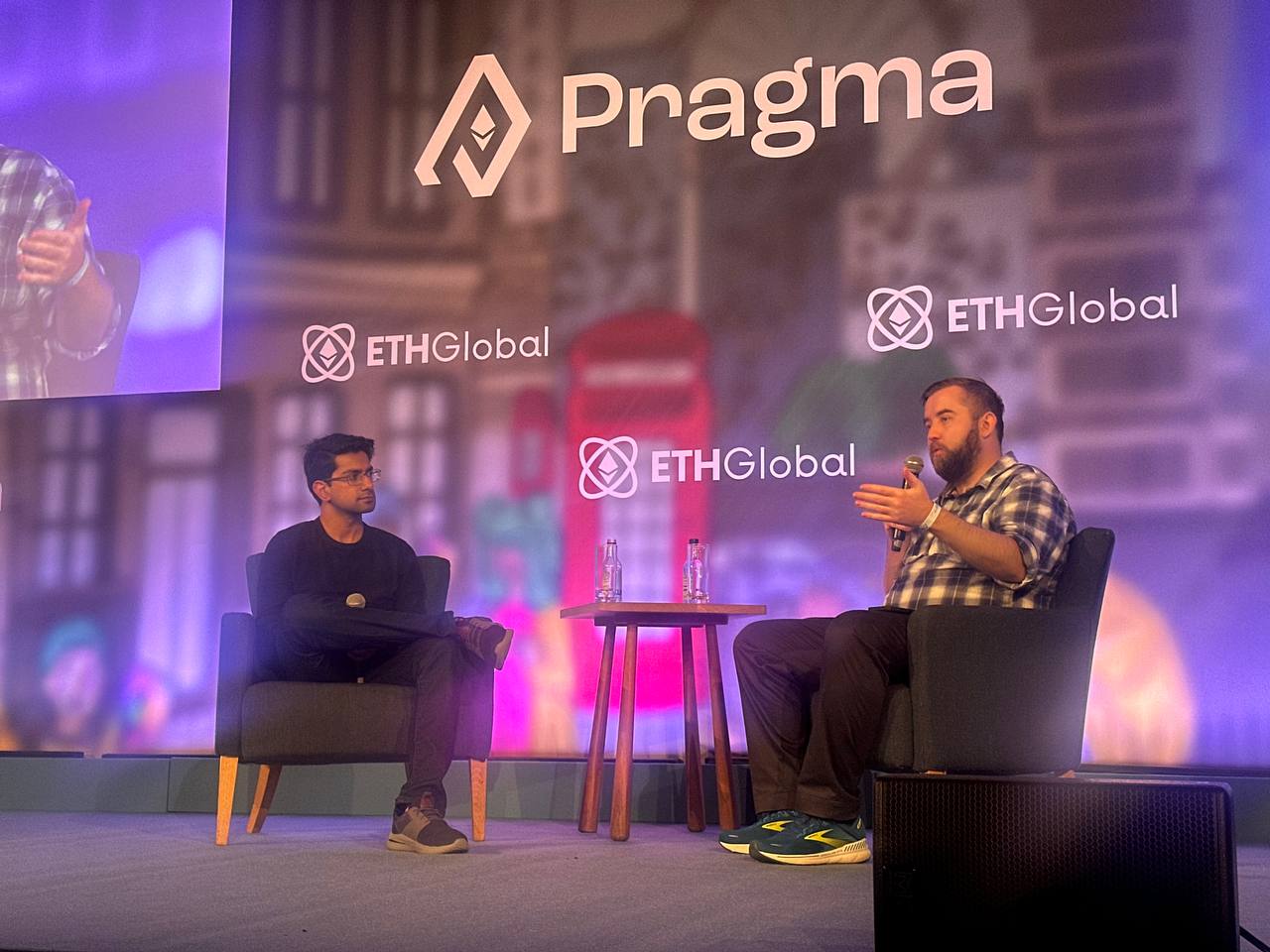This week at ETHGlobal Pragma London, an in-person summit for web3 builders and leaders, Chainlink co-founder Sergey Nazarov talked to ETHGlobal co-founder Kartik Talwar about the evolution of Chainlink’s decentralized oracle services, how they’re enabling new use cases for smart contracts, and how they’re forging a path toward changing how the world works.
Nazarov said Chainlink originated from the need to generate consensus about everything blockchains cannot. Beginning with market data, which gave rise to DeFi, Chainlink continues to deliver new types of cryptographically verified information onchain to power more advanced smart contracts.
As Nazarov explained it, Chainlink essentially put the “smart” in smart contracts.
“When we realized that smart contracts were not connected, that was a big gap that we sought to fill,” he said. “Price data was the first place where that gap met real demand and the system expanded far beyond that.”
Having enabled over $10 trillion in onchain transaction value, Chainlink now offers a growing suite of decentralized microservices that are essential to building web3.
For example, Proof of Reserve (PoR) cryptographically verifies the status of an event or asset in an external system, allowing counterparties to better manage risk. “Proof of Reserve is really the beginning of ‘proof of everything and anything’ you want to prove to a counterparty for them to transact with you,” Nazarov explained.
PoR was still just the beginning. “I started to view Chainlink as a set of offchain systems that create trust-minimization, that verify things that allow trust-minimized data, trust-minimized identity, trust-minimized proof of solvency/reserves to be injected into onchain transactions that allow those onchain transactions to both come into existence and become useful,” he said.
Next, Chainlink answered the question of how to bring various computations and automation functions, such as telling a smart contract what time it is, onchain through Automation, VRF (Verifiable Random Function), and Functions.
Chainlink then applied the same time-tested security model of decentralized oracle networks to building Cross-Chain Interoperability Protocol (CCIP), a global standard for moving data and value between different blockchains.
“Chainlink’s goal is to be the system that brings everything into blockchains, out of blockchains, and between blockchains,” said Nazarov.
CCIP represents a tipping point for web3 – by allowing traditional financial institutions to tokenize real-world assets that can move freely throughout the blockchain economy, as illustrated by Swift’s proof of concept, CCIP is poised to unite DeFi and TradFi into one global internet of contracts.
“There’s a huge list of features that are coming down the road,” Nazarov said. “Part of those features relate to web3, part relate to capital markets/enterprises, and I think CCIP is trying to connect those two worlds.”
He envisions a multichain future where each bank, asset manager, and enterprise creates its own private chain to transact with public blockchains like Ethereum. “This is hugely beneficial to the larger crypto community,” he said. “The whole crypto space is driven by net new users.”
Ultimately, he believes the world will convert to web3 when its user experience achieves parity with web2. “The user experience of web3 should be as good, as simple, as fast, as lacking complexity as the web2 experience,” he said. “People are like water; they go down the path of least resistance.”
Where web3 will exceed web2 is through superior transparency and cryptographic guarantees that assets cannot be stolen or the rules of an application cannot arbitrarily change. Once this model becomes simple for the average user to adopt, Nazarov thinks it will transform the entire world.
“It’s not about one particular use case,” he said. “It’s about all the world’s data, all the world’s ownership, all the world’s transactions functioning in that way.”


